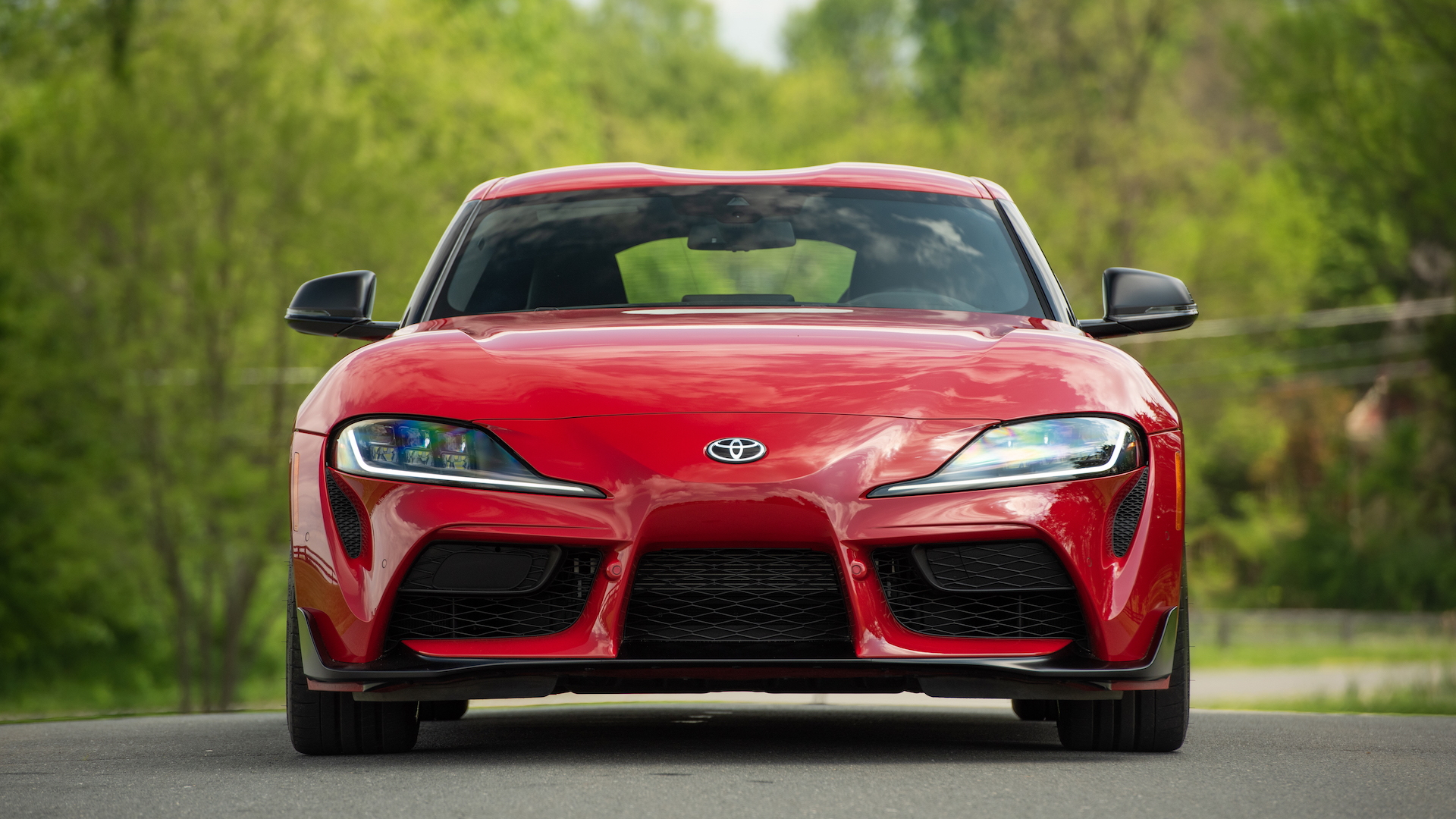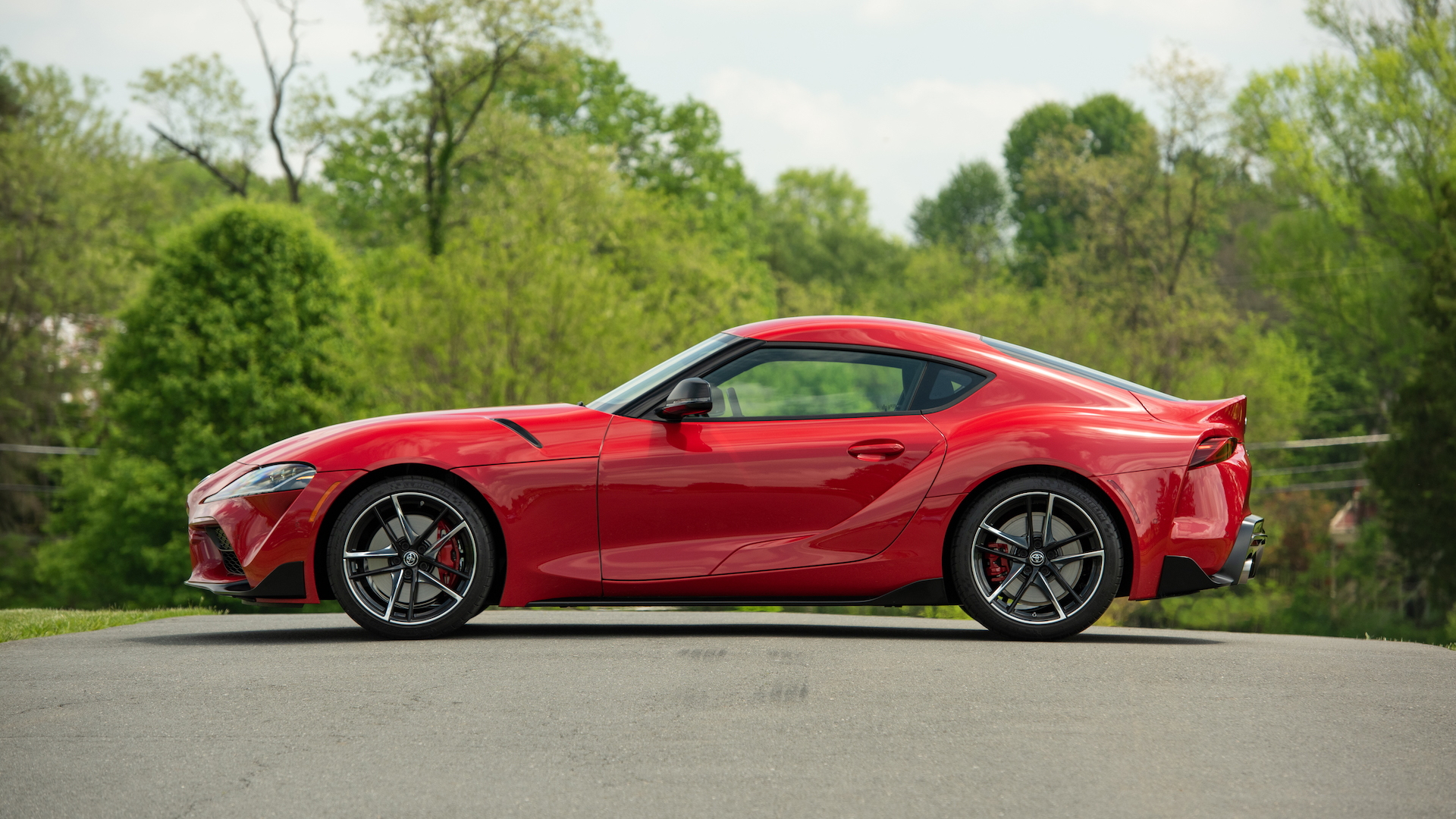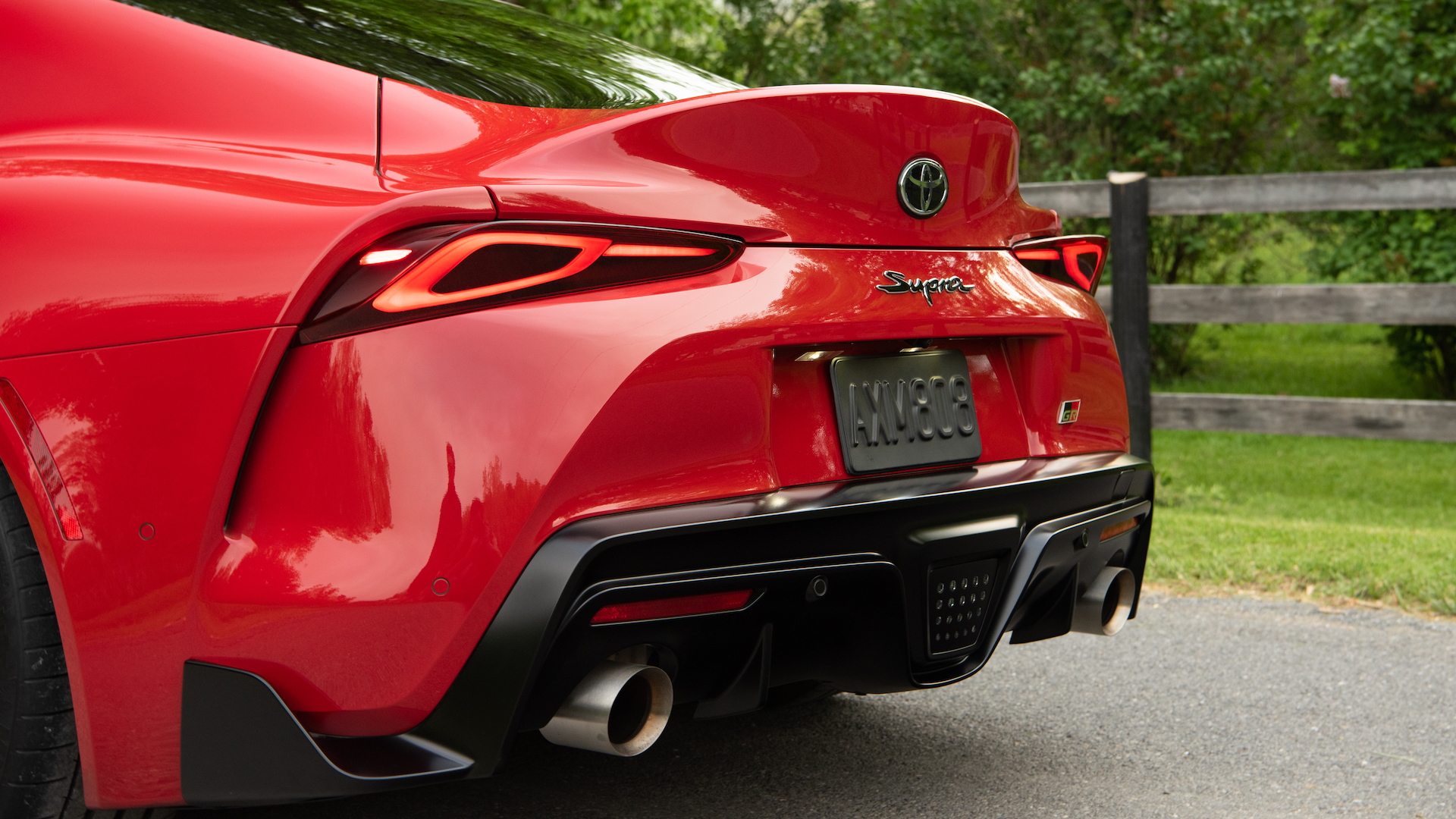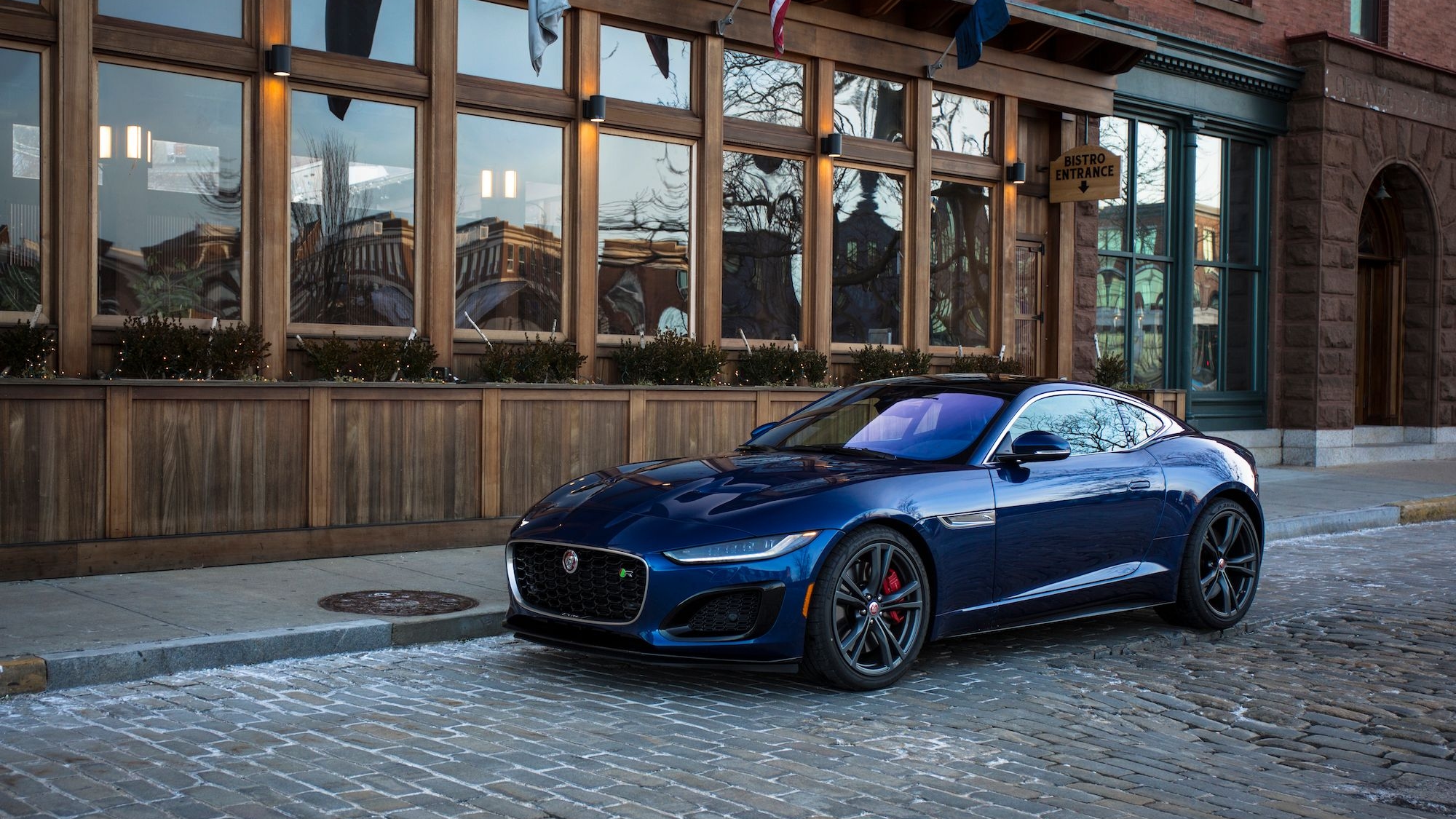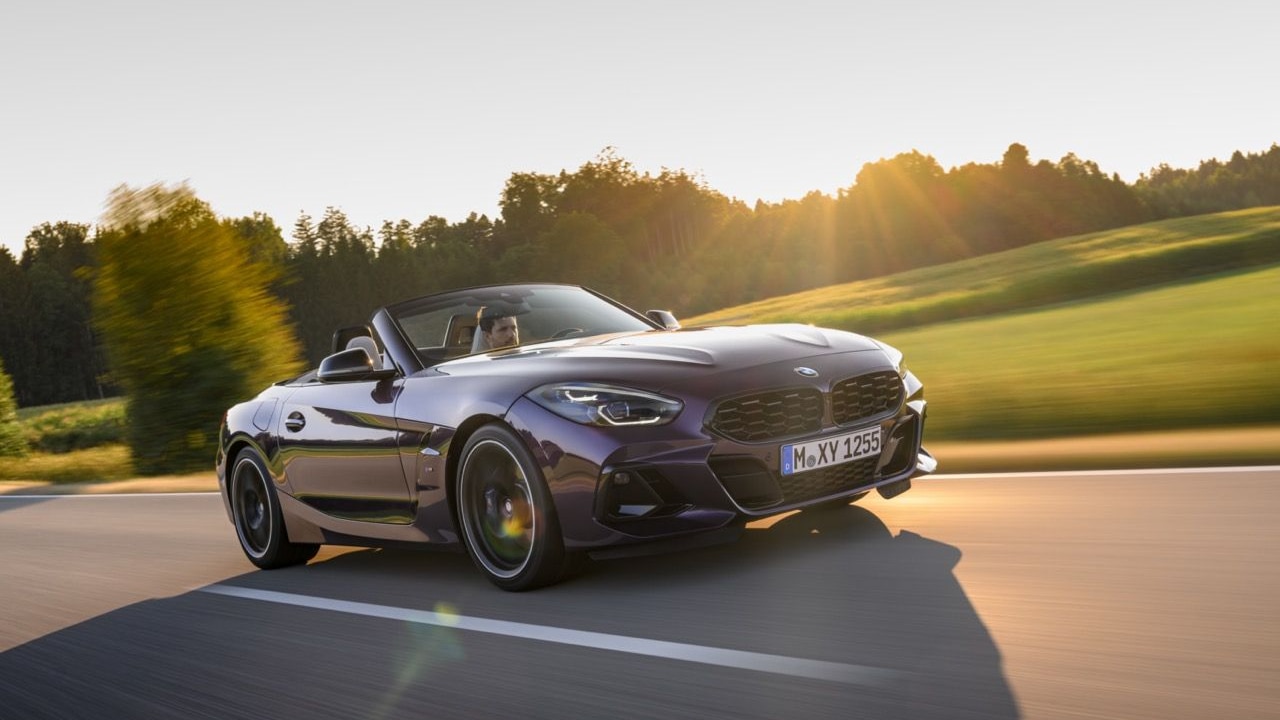It’s late in the day at Summit Point Raceway, the warm sun of a late West Virginia spring is starting to pack it in for the day, and I’m still working on smoothing out my hamfisted ways behind the wheel of the 2020 Toyota Supra in my few remaining laps on the track’s Shenandoah circuit. So far the car has rewarded me for frenetic driving. Now I’m trying to see if it will reward a more precise driving style.
As I pull out of the pits, the crew running the show joke that I’m “in the lead.” That only means I’ve driven more laps than anyone here, not that I’ve put up the fastest lap time. I can’t help myself. This car is more fun than my favorite rollercoaster, I have hours of track time at my disposal, and seats keep opening up. The Toyota Supra is back, and I’m enjoying it, damn it!
The tight 14-turn version of the track we’re using comes across as a long autocross more than a Grand Prix circuit. It’s just the place for a short-wheelbase, wide-track, torque-rich sports car like the 2020 Supra.
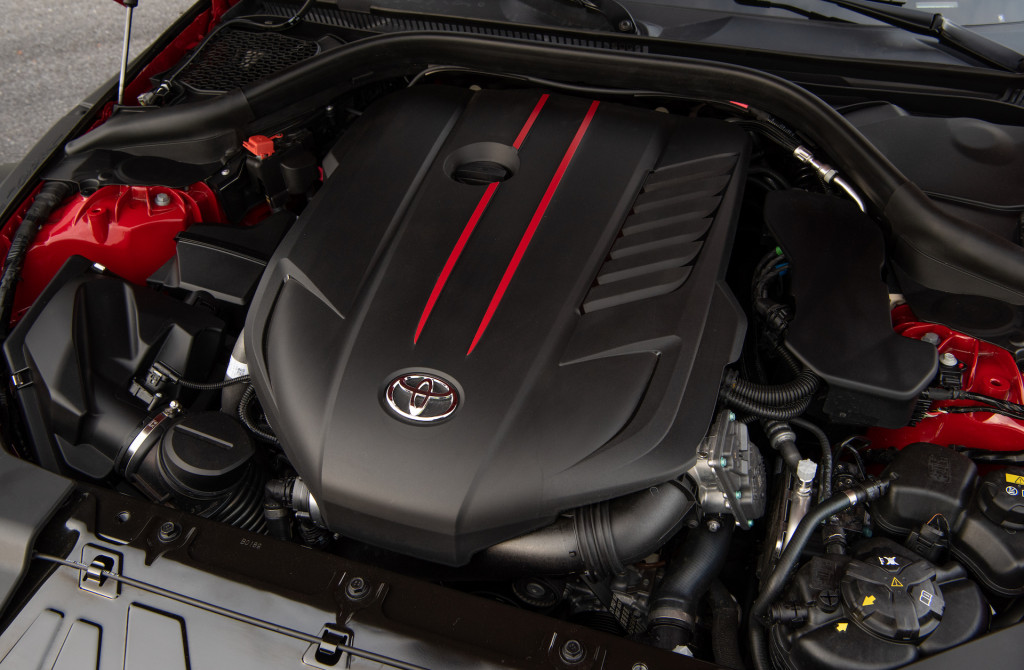
2020 Toyota Supra
It’s no 2JZ, but that’s fine with me
The Supra is the result of a partnership between Toyota and BMW, and it uses a lot of BMW technology and engineering, including the platform and the B58 turbocharged 3.0-line inline-6 under the long, low hood. Specifically, this is the B58B30O1 that makes 335 horsepower and 365 pound-feet of torque.
The B58 isn’t the fabled 2JZ turbocharged inline-6 from the fourth-generation A-80 Supra. Enthusiasts revered that engine for how well it could be modified to make additional power, but this one simply makes a lot of power as delivered stock.
The experience starts with a simple push of the start button. The B58 fires to life with a “whumm” that puts the limp sounds of the M3/M4 to shame. Toyota enhances the sound by piping in some of the low-range frequencies through the speakers. Mash the throttle, let up, and the engine sounds off pops and crackles like a child’s push-and-pull corn popper.
The real fun is in the feeling of thrust. The B58 is down 47 hp versus the version in the BMW Z4, but it still provides immediate zip when exiting a corner or even mid-corner, and it pushes the Supra from 0-60 mph in a scant 4.1 seconds. That makes it the quickest Toyota ever. Who needs a 2JZ?
CHECK OUT: First drive review: The 2019 BMW Z4 sDrive30i revives the roadster
A single twin-scroll turbocharger works in concert with direct injection and continuously variable timing of the exhaust and intake camshafts to help the B58 deliver power at low rpm. Variable intake valve lift that adjusts both timing and duration also improves throttle response. The engine’s torque curve is flat from 1,600 to 4,500 rpm and max horsepower is reached from 5,000 to 6,500 rpm. As a result, the Supra builds speed quickly and consistently well into the triple digits. It’s electronically limited to 155 mph, but there is obviously plenty of room for more.

2020 Toyota Supra
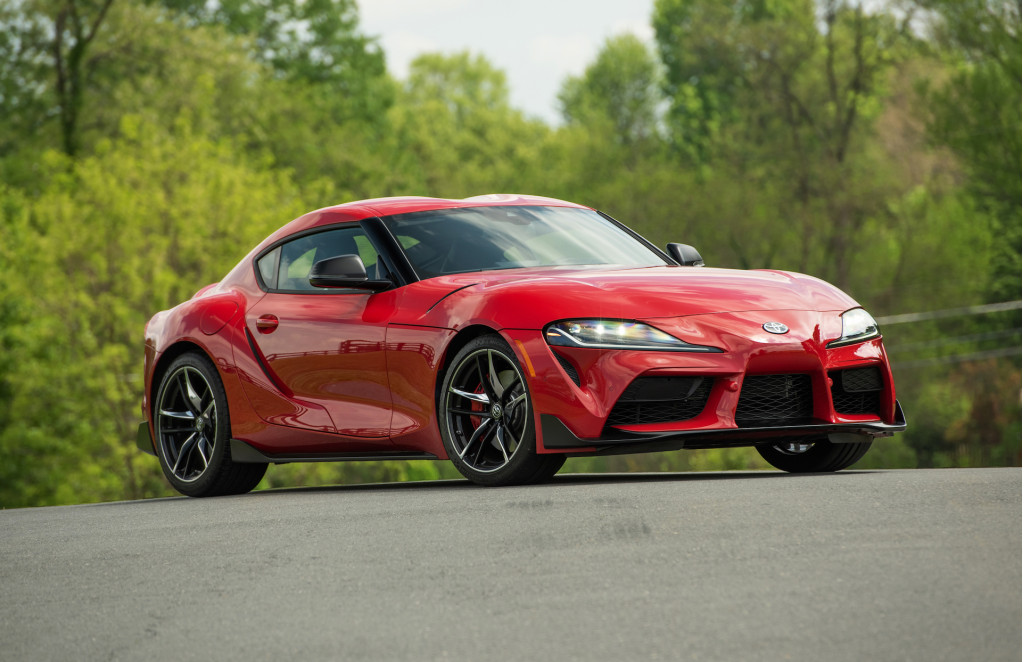
2020 Toyota Supra
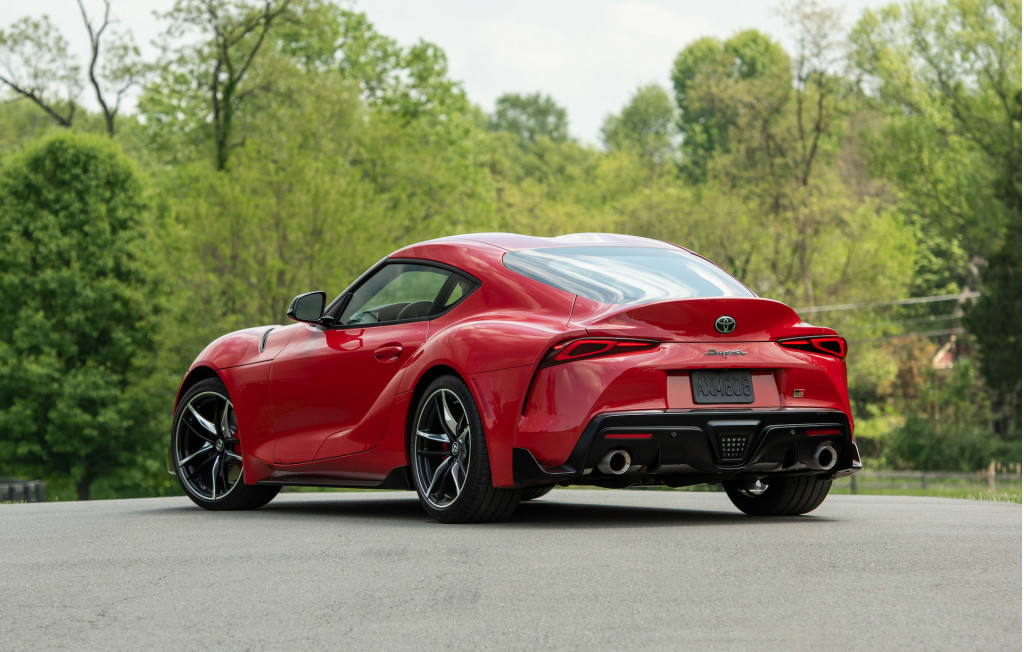
2020 Toyota Supra
Short, wide, and nimble
BMW’s platform makes the Supra shorter and wider than you think. Its 97.2-inch wheelbase is 4 inches shorter than that of the small Toyota 86 sports car and yet its track is about 3 inches wider. It also boasts a perfect 50/50 front/rear weight distribution and a center of gravity that’s lower than the 86, a car known for sitting low thanks in part to a horizontally opposed 4-cylinder engine. It’s all harnessed by a double-joint spring strut front suspension and a five-link rear suspension, both outfitted with adaptive adjustable dampers with Comfort and Sport settings.
Thanks to that formula, the revived Supra corners at the limit with incredibly agility. It’s easy to adjust mid-corner, especially in Sport, but tail-happy when provoked by bad driving habits like braking while turning, yanking the wheel too quickly upon turn-in, or even lifting off the throttle too suddenly mid-corner.
It’s a blast to play with the Supra in a turn, adjusting its angle of attack by feathering the throttle and brake. Ease into the throttle and the Supra squats in the rear, its nose rises slightly, and it tracks well through the turn. Build too much speed, though, and it starts to push. That’s when it’s time for the brake, which has to be treated like a Fabergé egg. Hit it too hard and the rear end will try to swap places with the front, though that can be corrected with a dab of opposite-angle steering.

2020 Toyota Supra

2020 Toyota Supra
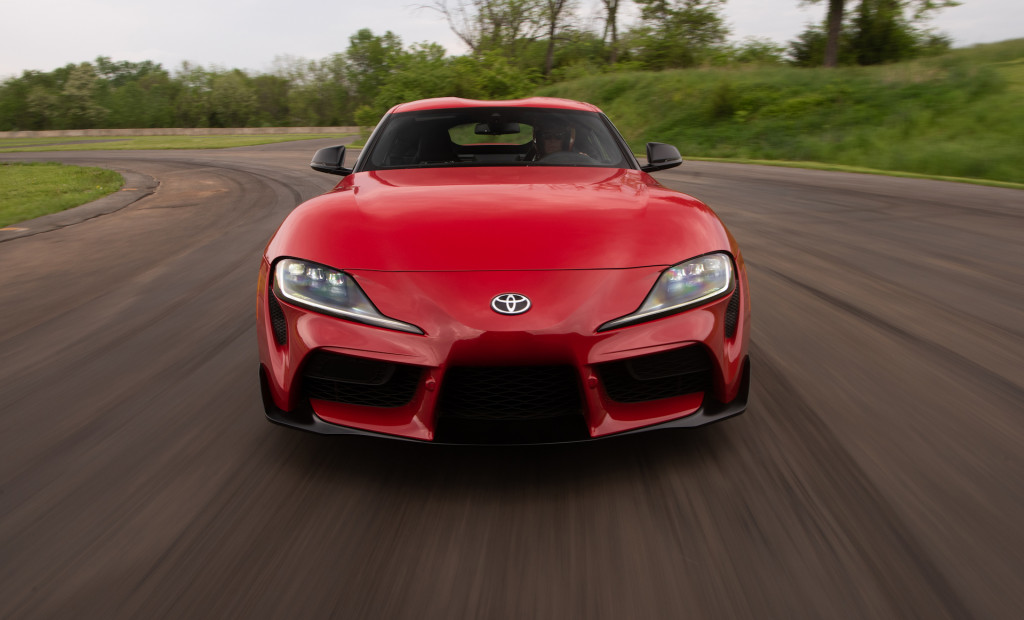
2020 Toyota Supra
Thus far, I’ve relied on years of track experience and the car’s stability control to fine-tune the Supra’s attitude in the tight corners. Turns 6 through 9, all left-handers that are best driven as one long arc, have been especially challenging. Turn 9 resolves a quadruple apex into a downhill run that tends to send the rear 275/35R19 Michelin Pilot Super Sports into a slide toward the front 255/35R19s. The Supra simply lacks the length of wheelbase to make corner stability one of its strengths.
That’s where the stability control and steering come into play. Toyota outfits the Supra with a 15:1 steering ratio compared to the quicker 13:1 ratio of the 86. It’s direct and has some heft in the available Sport mode, but it’s likely not quicker because that would make it easier to get the Supra out of shape. Yes, it does have a variable ratio thanks to different gear spacing the farther the steering is turned off center, but that only comes into play at parking lot speeds, not on a track like this.
Toyota also offers three settings for the stability control: On, Sport, and Off. The default On setting imposes its will to help the car maintain its intended path through liberal use of targeted braking. However, it doesn’t let the car slide as much as I’d like on this track. The Sport setting allows more yaw, and makes it easier for me to recover from my sometimes sloppy inputs. It doesn’t cut the power, even when it jerks the car back onto its path. That’s what I call well-tuned.
I wouldn’t mess with Off anywhere but a parking lot autocross. I fear a few too many overzealous and inexperienced Supra owners will turn off the stability control and introduce themselves to racetrack walls. Those who use Sport or can control the car without the intervention of stability control should be able to turn the 2020 Supra into an autocross champion. The car’s short wheelbase makes it Barry Sanders nimble, and the engine dishes out power like a first-year kindergarten teacher with gold stars.

2020 Toyota Supra Launch Edition

2020 Toyota Supra Launch Edition

2020 Toyota Supra Launch Edition
It rewards smooth driving, too
Brembo 13.7-inch front brakes with 4-piston calipers arrest the speed, no matter how fast the Supra is going. The only performance option is larger rear brakes; 13.0-inch rotors are standard, while 13.6-inch rotors are optional and both are clamped down upon by single, floating calipers.
It’s the end of a 5-hour track day and the brakes have never faded and the car has remained stable even under the heaviest braking. I expected it to bobble during braking given its short wheelbase.
I don’t have to be smooth to get the brakes to do their duty, but I do have to be smooth to make the Supra trace a consistent arc through corners. It takes patience and precision. I have to get the speed under control, turn in, and let the car flow through the turn. It helps to keep my eyes up and look as far ahead as possible. When it works it’s rewarding because it shows that I’ve attacked the track with skill rather than brute force.
A smooth lap in the Supra is a litmus test for skilled driving. A chaotic lap with hands and feet dancing will get the car around the track quickly, too. Both are fun, but work hard to achieve the former and the Supra will make you a better driver.
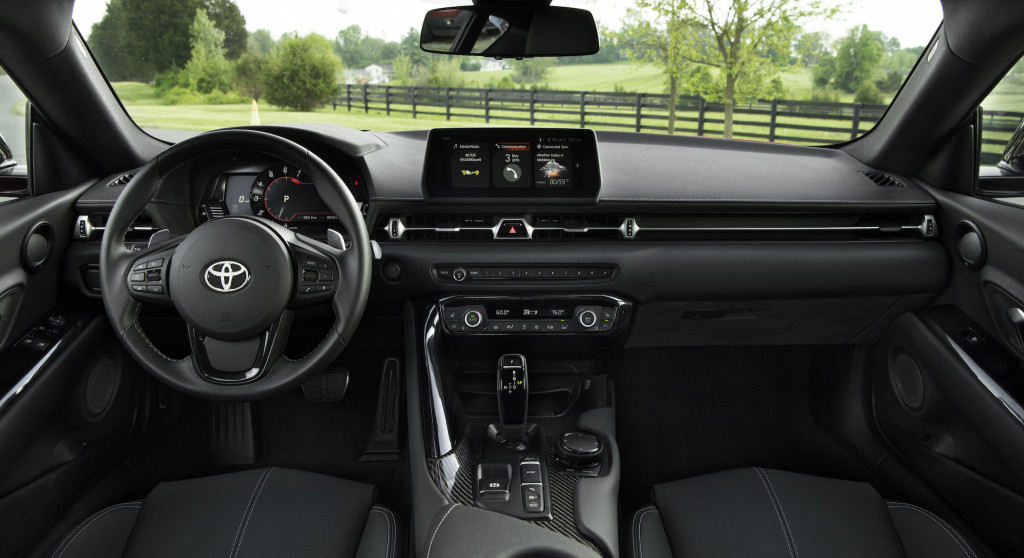
2020 Toyota Supra

2020 Toyota Supra

2020 Toyota Supra
A relative bargain
The Supra and the new BMW Z4 share more than just their engines and platforms. The Supra’s infotainment system and interior electronics also come from BMW. From the cockpit, the Supra feels like a BMW thanks to the familiar iDrive-type rotary controller and digital dashboard. The sport bucket seats have lots of bolstering to keep occupants snug during performance maneuvers, but tall drivers will want for leg room and their seats will rub up against the rear bulkhead of the cabin. The passenger seat is also oddly canted inward.
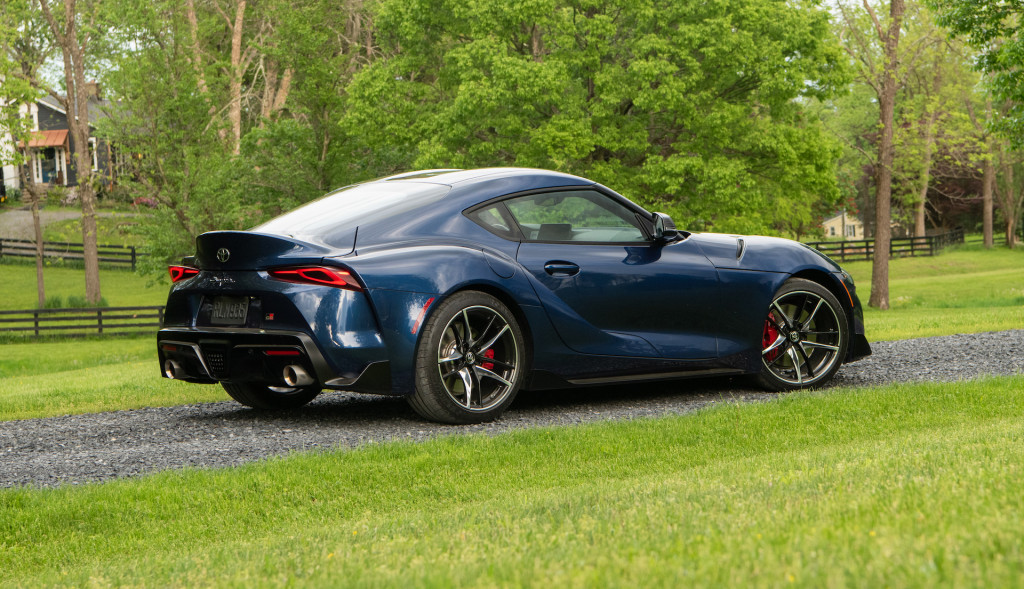
2020 Toyota Supra
While the Toyota is a coupe and the BMW is a roadster, one other big difference is price. The Supra starts at $50,920, which is actually a few hundred dollars less than the fourth-generation Supra cost in 1998, its final year. The new BMW Z4 starts at about the same price, but that’s for a 4-cylinder Z4 versus a 6-cylinder Supra. To get the Z4 with the inline-6, buyers will have to shell out $64,695. I’ll gladly give up 47 horsepower to save $14,000 and gain the rigidity of a coupe body style.
Now if I can just get out on the track one more time, I’m sure I can be even smoother...or maybe not.
Toyota paid for our travel and lodging so we could bring you this 2020 Supra first drive review.

